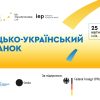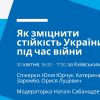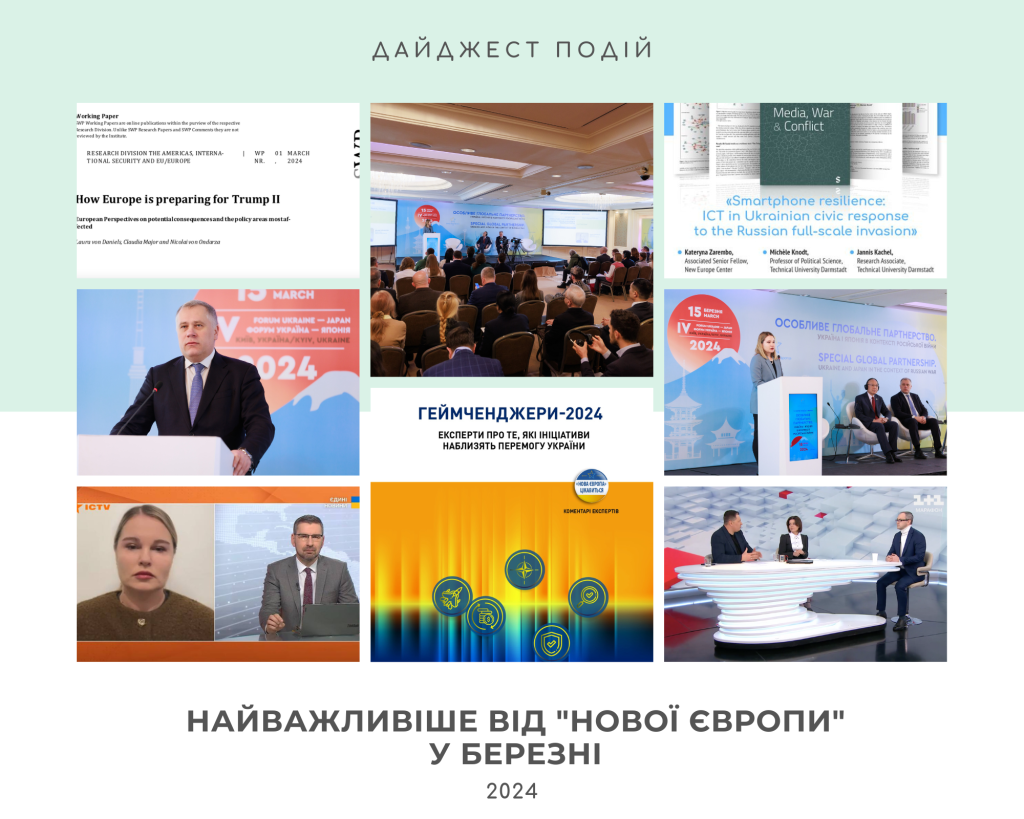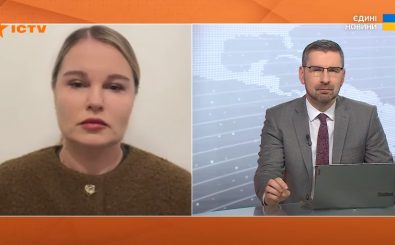Paper by New Europe Center research fellows Tetiana Levoniuk and Marianna Fakhurdinova.
At present the paper is available in Ukrainian only – here.
The study Eurosuccesses in Ukrainian regions has become a sort of a continuation of another large-scale project of the New Europe Center, Euromap, which our team has been conducting for three years in a row. Euromap aims to compare the trend of how Ukraine’s regions implement best European practices in nine different areas, ranging from economy to education and culture, from infrastructure to gender equality. To this end, we assess the progress of regions under almost 50 different indicators – a methodology that the New Europe Center once developed in conjunction with the Office of the Deputy Prime Minister for European and Euro-Atlantic Integration. Data are collected through communication with regional state administrations (RSAs) to which a request to that effect is sent.
However, after three years of carrying out such a study, the New Europe Center’s analysts have realized that Euromap, which is a quantitative research, does not provide a broader picture in the overall perspective, since quantitative indicators do not always reflect qualitative changes on the ground and do not allow measuring the impact of individual indicators on a region or specific community. In addition, a top-down approach was used in data collection, whereby local authorities collected information on European integration according to the indicators identified in Kyiv.
Consequently, it became necessary to obtain feedback from regions in order to understand how local authorities perceived European integration, what they thought would be evident of successful European integration and whether their vision of these issues differed significantly from the vision in Kyiv. To this end, at the request of the Office of the Deputy Prime Minister for European and Euro-Atlantic Integration, the New Europe Center initiated a new qualitative study, Eurosuccesses in Ukrainian regions, to explore the most emblematic examples of successful European integration and encourage local authorities to scrutinize this matter further on. We asked RSAs: “What do you think were European integration successes of your region in nine different areas in 2020?”
Regions reacted to the New Europe Center’s request differently: whereas some actively communicated with our analysts and provided more examples of local Eurosuccesses, others were less friendly and on the second or third attempt managed to provide only a few examples of successful regional integration. That said, there were those who did not respond at all. These are, in particular, Kyiv, Lviv and Sumy regions.
Another observation, which we made when analyzing the replies of regional state administrations, is that the choice of success stories by local authorities in a particular area was partly influenced by the indicators available in Euromap-3. Thus, local authorities mostly focused on the available indicators rather than offer their own unique success stories. On the one hand, it can be said that Kyiv and regions think in unison in this respect. On the other hand, it is possible that regions lack their own vision and, as our research shows, contribution to the regional European integration processes: local authorities often provided examples of projects funded or implemented by the European Union, Kyiv or local civil society.
Finally, according to our observations, COVID-19 has affected all the areas of the research. With this in mind, during the collection of information, we allowed representatives of regional state administrations to provide examples of Eurosuccesses from 2019 as well.
Analysts of the New Europe Center hope that the study Eurosuccesses in Ukrainian regions will become a successful communication tool for European integration on the ground, enabling some regions to learn about the European integration successes of others, gain a better understanding of how to implement tangible European integration and mutually inspire themselves to new European integration feats.
KEY FINDINGS
1. European integration is more than EU-supported projects. For the most part, local authorities in almost all sectors cited examples of projects funded by the European Union, initiated by Kyiv or implemented by local civil society. At the same time, the answers lacked local context and initiative of local authorities.
2. Different motivations of officials. For the most part, regional state administrations provided complete answers, containing examples from all sectors. Some RSAs provided incomplete information. For instance, the responses of Luhansk and Odesa regions included Eurosuccesses from one out of nine areas. Three regions (Kyiv, Lviv, Sumy) did not provide any answers at all. We assume that the reason thereof was failure to understand the request or lack of interest in the project.
3. Individual understanding of certain sectors. Interestingly, in some sectors regions cited approximately the same examples of Eurosuccesses (for example, in the sector “Local Democracy” the responses of regional state administrations mostly concerned expanding the network of administrative service centers), while in others differences and individual approaches were noted. For instance, in the sector “Broader Partnership” some regions cited examples of interregional cooperation and twinning with EU cities, whereas others cited a presentation of the region’s economic and investment potential among success stories. In the sector “Gender Equality” some regions mentioned examples of projects aimed at protecting women from violence and the aftermath of war, while others cited women’s participation in business and government.
4. Outdated information. Projects that some regional state administrations consider to be Eurosuccesses were implemented before the Revolution of Dignity (here it is worth noting Zakarpattia region, which provided examples of such projects in almost all sectors). It will be recalled that the period under study in this paper is 2019–2020.
5. Inconsistency of the example with the sector requested. Almost every sector contained cases that were not relevant to it. For example, holding an annual competition for people with disabilities “Beauty and Courage without Limits” (Donetsk region) in the sector “Gender Equality”; the project “Virtual reality unites the Carpathians: interactive school laboratories” (Zakarpattia region) in the sector “Healthcare”; a joint Romanian-Ukrainian project to improve educational conditions in vocational education institutions (Ivano-Frankivsk region) in the sector of “Communicating European integration”, etc.
6. Success stories at the intersection of spheres. At the same time, given the large number of indicators for assessing progress in nine sectors in the Euromap-3 study, we are aware that some success stories can be attributed to several areas. With this in mind, we accepted responses from local authorities which at first glance were unrelated to a particular sector, provided there was cogent reasoning. For instance, in the sector “Economic Integration” most RSAs cited examples of infrastructure projects, which, however, had been implemented with investments from EU member states. According to local authorities, the implementation of these projects has led to the creation of new jobs and increased budget revenues. At the same time, the project “Improvement of the environment within the Shatsk National Natural Park by building sewer systems in rural settlements around Lake Svityaz”, on the one hand, also falls under the sector “Infrastructure”. However, considering the RSA’s explanation that the project would reduce pollution in the Shatsk National Natural Park and the Western Bug and Pripyat river basins, we included it to the “Environment and Energy Policy” sector.
7. Blurred Eurosuccesses. The examples of some Eurosuccesses provided by RSAs contained many details, which have not allowed highlighting the key achievements of the region in a certain area. For example, the Zhytomyr and Donetsk RSAs listed all the regions’ health achievements made last year. The same trend is observed in several other sectors, such as economic integration, gender equality, etc.
8. Geographical determinism. Officials from the border regions focused on cross-border cooperation projects. Specifically, all examples provided by the Zakarpattia RSA were related to this topic, many similar success stories could also be found in the answers of the Volyn and Ivano-Frankivsk RSAs.
9. A formal approach to highlighting Eurosuccesses. In responding to the request of the New Europe Center, local authorities followed the official business style. However, for the future communication of Eurosuccesses, it is of crucial importance to move on to a clearer presentation without the use of clerical phrases, abbreviations and words of foreign origin, rarely used in everyday communication (such as “revitalization”, “destination”, etc.).
10. Verbosity. Analysts of the New Europe Center asked representatives of RSAs to provide one example of Eurosuccess for each sector, encouraging them to choose and properly present the best case. Instead, some RSAs provided answers in the style “the more, the better”: five or seven examples in one sector, without specifying what made that list the most successful in terms of European integration success stories.








